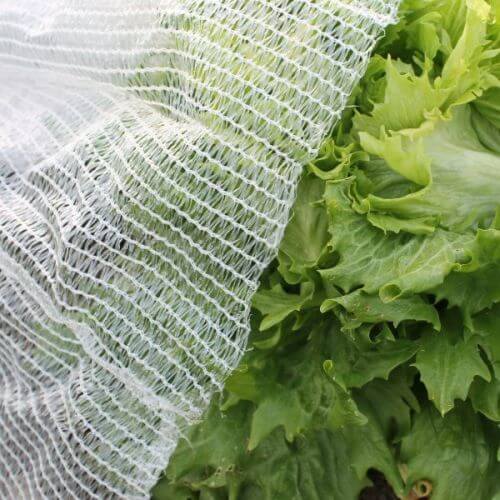What Frost Protection Is Right For Me?
When the temperature drops and frost begins to settle, it’s important to protect your crops from the harsh British winter. Even when it’s cold outside, you can still get into the garden and keep your plants, fruit, or vegetables safe from frost damage.
There are several types of frost protection available, each helping your crops survive and thrive until spring. Below are the most common and effective options.
Garden Fleece
Heavy duty 30g garden fleece is a popular choice for protecting crops through winter. It can shield plants from temperatures as low as -6°C, ideal for tender plants like early potatoes.
The fleece is UV stabilised and made from spun bonded polypropylene. It provides protection against snow, hail, and strong winds, helping your crops not only survive but thrive when spring returns.
Garden fleece also protects the soil beneath. Heavy winter rain and snow can damage soil and limit seed emergence. A layer of fleece prevents this and also helps deter garden pests by creating a physical barrier.
In greenhouses, fleece gives a double-glazing effect, keeping conditions stable. It’s easy to secure with clips or sticky pads and can be reused many times if handled carefully. It’s available in various sizes and can be trimmed to fit.
Fleece Bags
Fleece bags are made from the same 30g material but slightly thicker, protecting plants and trees down to -8°C. Each bag includes a drawstring for quick and easy fitting.
Simply slip the bag over your plant and tighten the drawstring to keep it secure. When temperatures rise, loosen and remove the bag to prevent overheating. Fleece bags block around 25% of sunlight but still allow water to pass through.
They can also be washed on a gentle ‘wool’ cycle, ready to reuse each winter.
Thermacrop
Thermacrop offers all the benefits of 30g fleece with a softer, longer-lasting fabric. Made from woven polyethylene strips, it has a life expectancy of up to five years.
It protects crops from temperatures as low as -3°C and encourages strong seed and young plant growth. Like fleece, water, air, and light pass through freely, and it can be machine-washed on a gentle setting.
To avoid suffocating plants, don’t keep crops covered for more than eight weeks at a time.
Polythene
Polythene is a UV-stabilised, lightweight 150-gauge material that lasts up to five years. It’s ideal for covering hoops or placing directly over plants.
It forms a barrier against wind, rain, snow, and frost while deterring pests and birds. The polythene also creates a microclimate underneath, helping young crops establish and grow faster in early spring.
Bell Cloches
Cloches protect individual plants in the same way as fleece or polythene but on a smaller scale. They’re lightweight, easy to move, and great for warming soil and promoting healthy seedling growth.
For windy areas, secure them with steel pegs for added stability. Adjust the top ventilator to control heat and humidity — closed to retain warmth or open as temperatures rise.
Cloches not only offer frost protection but can also encourage earlier flowering and fruiting. They’re especially useful for strawberries, salads, herbs, and tender vegetables.
